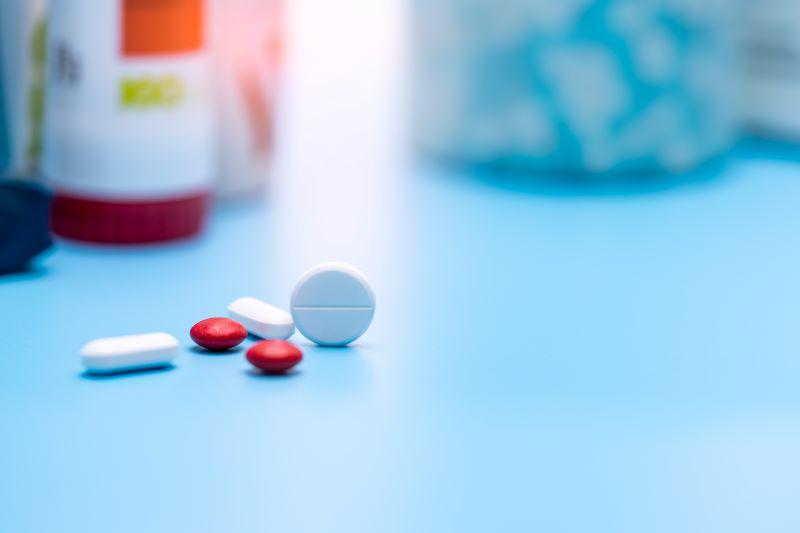Get Healthy!

- Steven Reinberg
- Posted June 16, 2022
Cost of Brand-Name Epilepsy Meds Is Soaring
Managing epilepsy is an increasingly expensive process in the United States, with prices of brand-name anti-seizure drugs nearly quadrupling over eight years, a new study finds.
From 2010 to 2018, the cost of brand-named epilepsy drugs, including meds like Vimpat (lacosamide), rose 277% overall, researchers found. Over the same period, the cost of generic drugs dropped 42%.
"We as doctors need to be aware of the ever-increasing costs of brand-name medications, particularly when compared to generic medications, and to think critically whether this increased cost is justified," said lead researcher Dr. Samuel Waller Terman, a clinical lecturer in neurology at the University of Michigan.
There is no single best anti-seizure medication, the researchers said in background notes with the study.
Many times doctors are influenced by the newness of drugs and opt to prescribe the latest ones, Terman said.
"It's a story of human behaviors," Terman said. "Sometimes we really like the new thing, but I think we need to be cognizant about the cost implications that we're often frankly blind to as prescribers."
In many cases, the new brand-name drug has benefits in terms of fewer side effects and fewer drug interactions, making it a better choice than an older drug, Terman said. But that's not always the case. For many patients, he said, an older generic drug can be as safe and effective.
For the study, Terman and his colleagues used a random sample of 20% of Medicare beneficiaries with coverage from 2008 to 2018. There were 77,000 to 133,000 patients with epilepsy each year. Brand-name drugs accounted for 79% of epilepsy drug costs but made up only 14% of prescribed drugs.
A year's supply of brand-name drugs cost $2,800 in 2008 but soared to $10,700 in 2018. Meanwhile, the cost of generic anti-seizure drugs dropped from $800 to $460 during that time, the researchers found.
Vimpat made up 45% of the cost increase in brand-name drugs, Terman said. Vimpat came off patent this year, and a generic version may appear in the next few years.
Clobazam (Onfi and Sympazan) accounted for 16% of the overall price increase and pregabalin (Lyrica) claimed 10%, the researchers said.
Over time, however, brand-name drugs represented a smaller percent of medications, falling from 56% in 2008 to 14% in 2018. This change is probably due to brand-name drugs losing their patent protection, allowing for cheaper generic versions, Terman said.
Terman added that the study looked at the total cost of drugs incurred by Medicare. It didn't break out the out-of-pocket cost to patients, which can vary by insurance and other factors. The study also didn't take into account the costs to younger patients who are not covered by Medicare.
Terman noted one impediment to lowering the cost of brand-name drugs: By law, Medicare cannot negotiate the cost of drugs with pharmaceutical companies as the U.S. Veterans Administration can. That was a concession Congress made when adding drug coverage to Medicare.
Doctors don't usually know how much a drug will cost a patient, so it's often up to the patient to discuss cost, especially if the patient can't afford the copay.
"Don't be afraid to ask your doctor about alternatives if the cost is too much," Terman said.
"Our work suggests that ensuring patients are on generic rather than brand-name medications when a generic equivalent exists represents one very simple strategy to bend this cost curve, which is immediately under our control as doctors, as opposed to more complex health care policy interventions like Medicare one day negotiating with drug companies," he said.
One possible exception to generic drugs is when a new drug is substantially better than older ones. That may be the case with Xcopri (cenobamate), which was introduced this year, Terman said.
"It has unusually strong efficacy data compared to other drugs when people continue having seizures, so in some may be worth the cost, but we need more long-term and cost-effectiveness data," he said.
Drug companies pressured doctors to prescribe the new brand-name drugs, said Barry Gidal, chair of the American Epilepsy Society's treatments committee and a professor of pharmacy and neurology at the University of Wisconsin - Madison. He was not part of the study.
"A lot of the pharmaceutical companies that made branded products really had a focused campaign to try to discredit generic competitors, calling them not satisfactory," Gidal said.
Gidal also said he thinks new drugs should be tested against existing drugs to see if they really do outperform older generic medications.
"We need a different competitive landscape in this country," he said. "I would like to see more accountability on their part [drug companies] and justification. There are times a generic drug will work just as well."
Gidal agreed with Terman that in some cases the new drug offers benefits beyond what older drugs do. "There are some times that is the best option for a patient," he said.
Besides talking to your doctor about high drug prices, Gidal suggested building a relationship with your pharmacist.
"You can have conversations with the pharmacist about what your situation is and what my alternatives are. Are there other coupons? A lot of companies have options to help you pay for their drugs," Gidal noted.
The report was published online June 15 in the journal Neurology.
More information
For more on epilepsy, see the U.S. Centers for Disease Control and Prevention.
SOURCES: Samuel Waller Terman, MD, clinical lecturer, neurology, University of Michigan, Ann Arbor; Barry Gidal, PharmD, RPh, chair, American Epilepsy Society treatments committee, and professor of pharmacy, University of Wisconsin - Madison; Neurology, June 15, 2022, online





